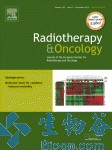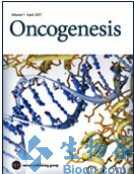Cancer:接触橙剂与恶性前列腺癌相关
2013-05-17 Alexa 译 医学论坛网
橙剂(Agent Orange):一种高效除草剂,因其容器的标志条纹为橙色,故名“橙剂”。该物品中含有一种化学毒物——二氧芑(dioxin,即通常所说的二恶英)化合物。越南战争期间美军用低空慢速飞行的飞机喷洒于被判断为共产党武装人员藏身之地的森林、丛林和其他植被上,使树木等植物落叶。 波特兰退伍军人行政医疗中心、俄勒冈医科大学的Mark Garzotto博士的

橙剂(Agent Orange):一种高效除草剂,因其容器的标志条纹为橙色,故名“橙剂”。该物品中含有一种化学毒物——二氧芑(dioxin,即通常所说的二恶英)化合物。越南战争期间美军用低空慢速飞行的飞机喷洒于被判断为共产党武装人员藏身之地的森林、丛林和其他植被上,使树木等植物落叶。
波特兰退伍军人行政医疗中心、俄勒冈医科大学的Mark Garzotto博士的一项新的研究分析发现,接触橙剂的老兵与其罹患致命性的前列腺癌之间的联系,接触橙剂的老兵应行前列腺癌筛查。该项研究在线发表在5月13日的美国癌症协会的同行评审期刊——《癌症》杂志上。
越南战期间,大量使用除草剂橙剂,二恶英(一种危险的毒物和潜在致癌物)污染严重。先前的研究表明,接触橙剂可能会增加男性前列腺癌的患病风险,但是否会增加致命风险仍不确定。
Mark Garzotto博士认为,患病风险和致命风险,这两者区别很大。因为大部分前列腺癌都是非致命性的,甚至不一定需要检查和治疗。用一种特异性的方法来检测致命的前列腺癌,这将改进前列腺筛查和治疗的有效性。
为了找到橙剂暴露与致命的或高分期的前列腺癌之间的联系,公共卫生硕士Nathan Ansbaugh设计并分析了2720名美国老兵的初步前列腺活检的结果。该前列腺活检由多个供应商提供。此研究的另一个主要研究者Garzotto 博士整理分析了活检结果和相关临床资料。
初步活检结果显示,896名(32.9%)老兵诊断为前列腺癌;459 人(16.9%)诊断为高分期前列腺癌。接触橙剂的老兵罹患前列腺癌的整体风险增加了52%。接触除草剂不增加低分期前列腺癌的患病风险,但罹患高分期前列腺癌的风险增加75%。此外,接触橙剂的老兵最高分期(即最致命)前列腺癌的风险增加了两倍以上。
研究表明,在对美国老兵进行前列腺筛查时,询问其是否有橙剂接触史,这是一种易于识别的手段。这样可以让致命的或潜在的前列腺癌老兵得到早期诊断和治疗,延长生存期,改善生活质量。Garzotto博士说:“战争中使用的生物制剂含有大量的化学污染物,废物处理和其他化学过程会产生的二恶英与二恶英类化合物,这两者都对人体有危害或存在潜在危害。人们需要提高防护意识。”

Agent Orange as a risk factor for high-grade prostate cancer.
BACKGROUND
Agent Orange (AO) exposure (AOe) is a potential risk factor for the development of prostate cancer (PCa). However, it is unknown whether AOe specifically increases the risk of lethal PCa. The objective of this study was to determine the association between AOe and the risk of detecting high-grade PCa (HGPCa) (Gleason score ≥7) on biopsy in a US Veteran cohort.
METHODS
Risk factors included clinicodemographic and laboratory data from veterans who were referred for an initial prostate biopsy. Outcomes were defined as the presence versus the absence of PCa, HGPCa, or low-grade PCa (LGPCa) (Gleason score ≤6) in biopsy specimens. Risk among AOe veterans relative to unexposed veterans was estimated using multivariate logistic regression. Separate models were used to determine whether AOe was associated with an increased risk of PCa, HGPCa, or LGPCa.
RESULTS
Of 2720 veterans who underwent biopsy, PCa was diagnosed in 896 veterans (32.9%), and 459 veterans (16.9%) had HGPCa. AOe was associated with a 52% increase in the overall risk of detecting PCa (adjusted odds ratio, 1.52; 95% confidence interval, 1.07-2.13). AOe did not confer an increase in the risk of LGPCa (adjusted odds ratio, 1.24; 95% confidence interval, 0.81-1.91), although a 75% increase in the risk of HGPCa was observed (adjusted odds ratio, 1.75; 95% confidence interval, 1.12-2.74). AOe was associated with a 2.1-fold increase (95% confidence interval, 1.22-3.62; P < .01) in the risk of detecting PCa with a Gleason score ≥8.
CONCLUSIONS
The current results indicated that an increased risk of PCa associated with AOe is driven by an increased risk of HGPCa in men who undergo an initial prostate biopsy. These findings may aid in improved PCa screening for Vietnam-era veterans. Cancer 2013. © 2013 American Cancer Society.
原文阅读:Agent Orange exposure linked to life-threatening prostate cancer
A new analysis has found a link between exposure to Agent Orange and lethal forms of prostate cancer among US Veterans. Published early online in Cancer, a peer-reviewed journal of the American Cancer Society, the findings suggest that Agent Orange exposure history should be incorporated into prostate screening decisions for Veterans.
The herbicide Agent Orange was heavily used during the Vietnam War era and was often contaminated with dioxin, a dangerous toxin and potential carcinogen. Prior research suggests that exposure to Agent Orange may increase men's risk of developing prostate cancer, but it is unclear whether it specifically increases their risk of developing lethal forms of the disease. "This is an important distinction as the majority of prostate cancer cases are non-lethal and thus do not necessarily require detection or therapy. Having a means of specifically detecting life-threatening cancer would improve the effectiveness of screening and treatment of prostate cancer," said Mark Garzotto, MD, of the Portland Veterans Administration Medical Center and Oregon Health & Science University.
To look for a link between Agent Orange exposure and life-threatening, or high-grade, prostate cancer, Nathan Ansbaugh, MPH, designed and conducted analyses on a group of 2,720 US Veterans who were referred by multiple providers for initial prostate biopsy. Biopsy results and clinical information were compiled for analysis by principal investigator Dr. Garzotto.
Prostate cancer was diagnosed in 896 (32.9 percent) of the Veterans; 459 (16.9 percent) had high-grade disease. Agent Orange exposure was linked with a 52 percent increase in overall risk of prostate cancer detection by biopsy. Exposure to the herbicide did not confer an increase in risk of low-grade prostate cancer, but it was linked with a 75 percent increase in risk of high-grade prostate cancer. In addition, Agent Orange exposure was associated with more than a two-fold increase in the highest-grade, most lethal cancers.
This study indicates that determining men's Agent Orange exposure status is a readily identifiable means of improving prostate cancer screening for US Veterans, allowing for earlier detection and treatment of lethal cases and potentially prolonging survival and improving quality of life. "It also should raise awareness about potential harms of chemical contaminants in biologic agents used in warfare and the risks associated with waste handling and other chemical processes that generate dioxin or dioxin-related compounds," said Dr. Garzotto.
本网站所有内容来源注明为“梅斯医学”或“MedSci原创”的文字、图片和音视频资料,版权均属于梅斯医学所有。非经授权,任何媒体、网站或个人不得转载,授权转载时须注明来源为“梅斯医学”。其它来源的文章系转载文章,或“梅斯号”自媒体发布的文章,仅系出于传递更多信息之目的,本站仅负责审核内容合规,其内容不代表本站立场,本站不负责内容的准确性和版权。如果存在侵权、或不希望被转载的媒体或个人可与我们联系,我们将立即进行删除处理。
在此留言










#恶性前列腺癌#
52